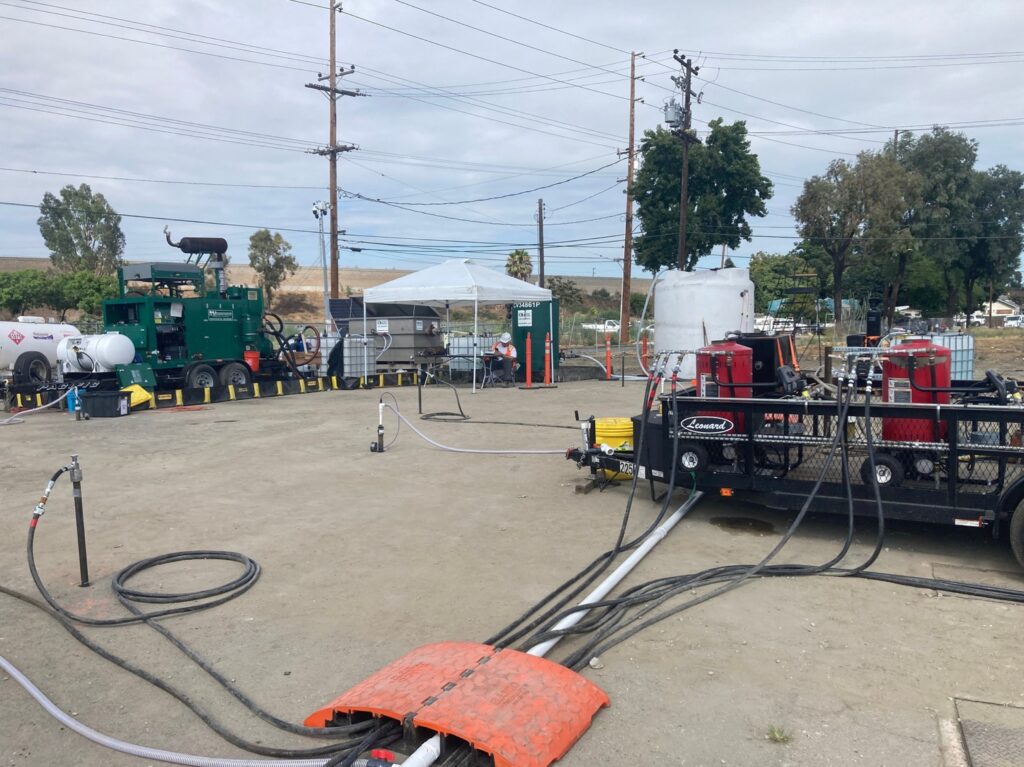Thermal: Steam Enhanced Extraction
Steam Enhanced Extraction (SEE) was originally developed at the University of California in the late 90s to efficiently remove petroleum-based free product from the subsurface. Redox Tech has adapted this technology to introduce super-heated water containing SBC™ which flashes to steam in the aquifer allowing NAPL (non-aqueous phase liquid) to be extracted from a nearby recovery well. The sulfate in SBC™ remains in the aquifer to supply an electron acceptor for bioremediation after the SEE process is completed.

The second purpose for using steam is to thermally catalyze sodium persulfate. A total organic carbon (TOC) test is completed with sodium persulfate at 60° C for the oxidant. By thermally activating the persulfate, we can complete an in situ TOC test and destroy a wide range of organic compounds in place.
It is a common misconception that thermal technologies are extremely expensive. For illustrative purposes, the fuel cost to heat one ton of soil by 10°C is provided below.
- One ton of saturated soil, 30% total porosity, requires approximately 15,000 BTUs to raise 10°C
- One gallon of diesel contains approximately 135,000 BTU
- Fuel costs are less than $1 per ton for thermal activation
As a rule-of-thumb estimate, the total cost to heat soil 10°C is roughly $5 to $10 per ton, depending upon such factors as soil type, depth, availability of water, etc. The cost of each additional 10°C increase is roughly $2 to $3 per ton. A spreadsheet is provided below, which allows one to estimate the heat required to heat soil and water in situ. Also, a list of sites where steam-activated persulfate has been applied is provided